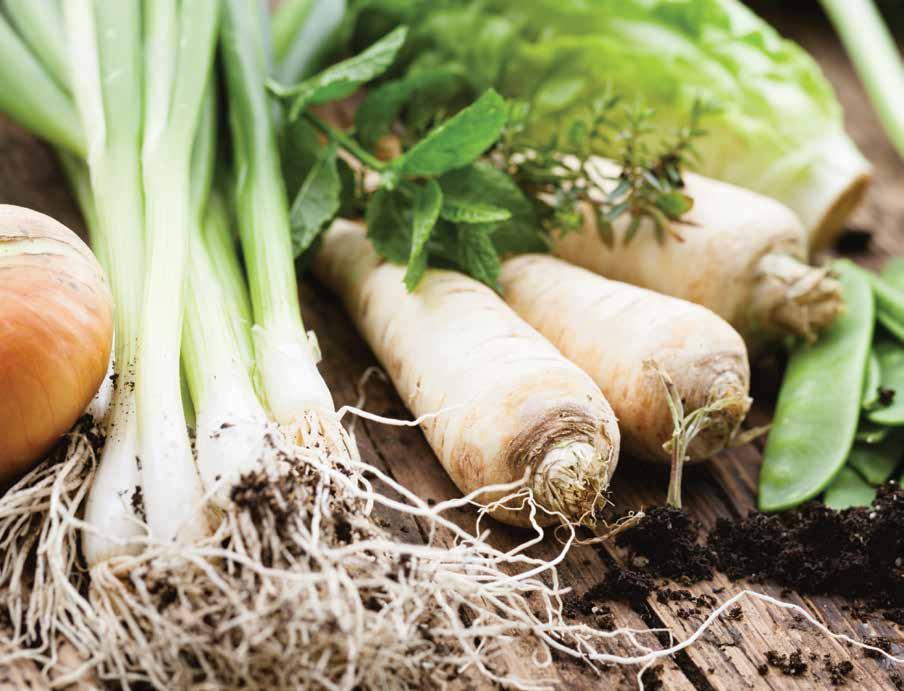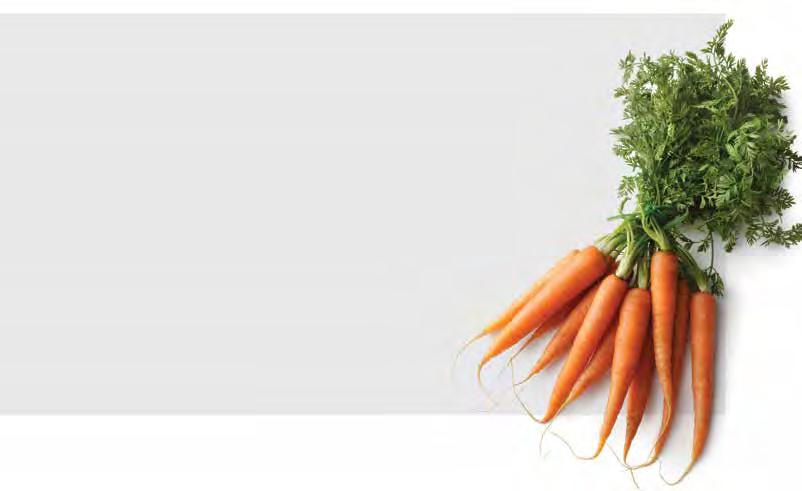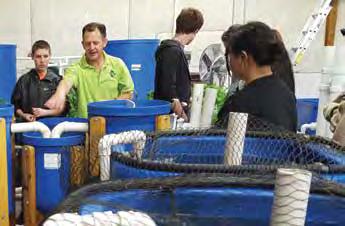
9 minute read
The Shire farm
“But where our hearts truly lie is in peace and quiet and good, tilled earth. For all Hobbits share a love of things that grow. And, yes, no doubt to others, our ways seem quaint. But today of all days, it is brought home to me, it is no bad thing to celebrate a simple life.” The Fellowship of the Ring, the movie
Sara Figgins ’06 and Don Fahler, aka Farmer Figgins and Farmer Don

n 2012, Sara Figgins ’06 and her partner, Don Fahler, bought a 10- acre farm in western Michigan about an hour from Grand Rapids. They named it The Shire Farm after the Hobbit-settled region in J.R.R. Tolkien’s Lord of the Rings. “The Shire had always been a symbol for me of a healthy, rural culture,” Figgins says. “At the end of the books, the Hobbits raise a rebellion, overthrow the invading forces and return the Shire back to its previous rural state. Tolkien seems to prescribe voluntary simplicity as a remedy to the problems of modern society.” I
Farming: Sweet Simplicity and Challenging Complexity
The most rewarding aspect of farming for Figgins has been the process of learning new skills and continuing her education.
“I’ve learned to grow dozens of different kinds of plants and to raise our own animals and birth new life,” Figgins says. “Learning to preserve the harvest, to cook, to build— every day is something different and every season has its rhythms and recurring duties; they also have their own flavor, their own particular harvest or bounty. It’s said that a farmer who has farmed 20 years has only had 20 times to refine his land and experiment with different varieties and amendments. Every year is a new try, another round in many ongoing experiments. Farming is a constant process of learning, a life of learning and experimentation. For instance, we ‘processed’ our first beef cow. His was the first birth—besides barn cats—that we had on the farm. I helped guide him to find and suck his mother’s teat when he was still wet and steaming. Wanting to make the most of him, we kept many organs and bones for dog food, and I will be attempting to render his fat into tallow for soap, candles and cooking.”
And, her greatest challenge?
“It is difficult coming to terms with the fact that we are quite productive. In our first year of operation, we were able to provide full-diet CSA [Community Supported Agriculture] shares of eggs, pork, chicken and produce. The farm pays for itself and produces most of its inputs. Yet it cannot pay for our labors. And yes, we do all the work ourselves.”

The Shire Farm 29
Lessons Learned
Figgins offers advice to new farmers with the top three things she has learned: 1. Connect with your community; they are your greatest asset. A lot of people get into farming because of the romance of the independent, self-sufficient farmer. But the reality is, the costs of farming are high, both the investment, and the knowledge and labor required. Whether rural or urban, your community is your home, your best source of local knowledge, support and collaboration. These farmers know what has worked in the past and services available in the area. To limit costs, you can develop relationships with your neighbors to borrow or rent equipment, or even start an equipment collective of small farmers who all need periodic use of equipment. You can also collaborate to open new markets (restaurants, hospitals,
Simone and Judy are named after the philosophers Simone de Beauvoir and Judith Butler, because what else do you name black sheep after? Best part of all, they are walking water-powered lawn mowers!

schools) that you wouldn’t be able to supply to before, or save and share seeds to reduce costs and promote local food security.
2. Things will go wrong. Farming is, after all, a risky business. Often we learn things on the farm the hard way, like when a chicken gets killed, a pig escapes or

Farmer Figgins’ Tips on Maximizing Your CSA Share “To get the most out of your Community Supported Agriculture (CSA) share requires some extra prep work upfront, as soon as you get the box. Learn how to best store your produce for optimum freshness and make the effort to prep your produce as soon as you get home. I’ll give a few examples. Treat warm-loving annual herbs like basil and cilantro like cut flowers. Put them in water, put a plastic bag over them and a rubber band around the base, and store in the door of your refrigerator. They’ll last much longer. Trim the leaves off of your root crops. You can wash and eat most of them raw or sautéed, or make them into a pesto. Don’t store apples and potatoes together. Store ripe tomatoes on the counter, not in the fridge. It’s basic information that most of us are sorely lacking on how produce is best stored, but it’s easily available on the Internet. The other step I would suggest to make the most out of your CSA is to preserve as you go. Have extra of something and don’t think you’ll get to it? Blanche and freeze it for winter. Make extra large dishes and freeze half of it to be enjoyed months later. Make dishes that can be flexible with their ingredients and use up lots of vegetables in quiches, salads, stir-frys and soups.”
plants die. But you can learn something from that. Why did it happen, and how can I stop it from happening again? Don’t take failure personally. Instead, take it as a challenge and opportunity to learn. Because there is always more to learn. 3. Expect that you or your partner will most likely have to work another job to be able to afford a farm and to pay for much of its costs. Access to land is the biggest challenge facing young American farmers today and paying for it and the farm is no easy feat. This is no failure of you or your farm, but a reality of farming today in America.
Promising Developments for Small Farmers Figgins finds the growing trends in localization and collaboration encouraging.
“I think we are seeing a change in paradigm in response to the rapid changes in our lives, a shift toward localization and local resilience. There is a movement toward developing and empowering communities and individuals through collective action and self-management to shape their local spheres and to take part in shaping change. This strategy focuses on building societies based on local production of food, energy and goods, and the local development of currency, governance and culture. It’s an opportunity to rethink and reinvent local economies within our communities and within our homes. “In recent years, there has been the growth of food hubs and multi-farm cooperatives and CSAs, which provide support as well as the quantity and scale that small scale farmers cannot achieve sustainably on their own. By working cooperatively, we can share the upfront costs and equipment, share the risk inherent in relying on nature’s whims for your product, and share the bounty of our farms to reach a larger customer base. This is something we are going to be actively pursuing and promoting ourselves in our own area starting this year.”

A Farming Writer or a Writing Farmer?
After graduating from Fountain Valley, Figgins attended Smith College and transferred to Colorado State University where she entered the Intercollegiate Organic Horticulture Program. Three years in, she changed her major to English and creative writing, for which she earned her degree. “I remember [former faculty] Mr. [David] Maher P ’12, ’14 telling us a Hemingway quote that greatly inspired me: ‘How vain it is to sit down to write when you have not yet stood up to live.’ I always loved reading and had aspirations of becoming a writer, but was unsure what I wanted to write about, what really mattered to me. You find the answer to these questions by living, by learning not just what you’re against, but what you’re for—the paths you take and what passions you take up. For me, that was farming. There is risk and experimentation, there is heartbreak and affection, there is hardship and adversity, there is life and there is death. There is everything you need to become a writer.”
The pigs decided to redecorate their pen by moving their hut downhill and then rooting up their old bedding spot for a new wallow. 31
CHECK OUT WHAT’S HAPPENING IN THE DINING ROOM!
Fountain Valley School of Colorado The Shire Farm’s first calf, Pippin

It’s Springtime on The Shire Farm
Figgins reports: “The pigs got out yesterday, telling us that something was wrong with the electric charger. Not long ago, this would have sent me into a state of anxiety, but now I grab some eggs and when I call for them, they come. Four-hundred pound pregnant pigs trot behind me, following me into their pen for an egg treat. One gets distracted and roots for a bit in a compost pile, rolls in cow manure and squeals with delight. “Spring is the time of plans and projects and planting seeds. The time for starting new life in the faint promise of reaping the benefits in the future, from planning a garden to starting tomato seeds, from planting a tree to assisting in spring lambing. We are on lamb watch now, expecting the birth of five to nine lambs any day.
“This year is our first year as breeders of lambs and piglets, both presenting their own challenges and learning opportunities—birthing, castration, weaning and more. This will also be our first year with our own wool, so I’m looking forward to learning how to spin my own wool for sale and personal use.”
-Margaret Atwood In 2013, Fountain Valley School contracted with Flik Independent School Dining to manage FVS’s food service. The chefs cook from scratch and use local ingredients as much as possible. Milk and yogurt are from cows not treated with bovine growth hormone. Seafood sources comply with Monterey Bay Aquarium Seafood Watch standards. And a composting program is in the works to help grow the School’s hay crop. A fascinating aspect of Flik’s service is that they source produce and fish from Daily Harvest Aquaponics. Aquaponics is a food production system that combines conventional aquaculture (raising fish in tanks) with hydroponics (cultivating plants in water) in a symbiotic environment. The fish, plants and water all contained in one system, which offers several benefits:
The system uses 90 percent less water than traditional farming.
It’s all natural and pesticide free.
No soil means no soil-borne diseases
Produce and fish are truly local
There is no off season
The bounty from Daily Harvest Aquaponics that Fountain Valley enjoys includes basil, cilantro, kale, Swiss chard, arugula, sorrel and parsley, and lettuces including butterhead, leaf and romaine. The fish selection includes tilapia and striped bass.











